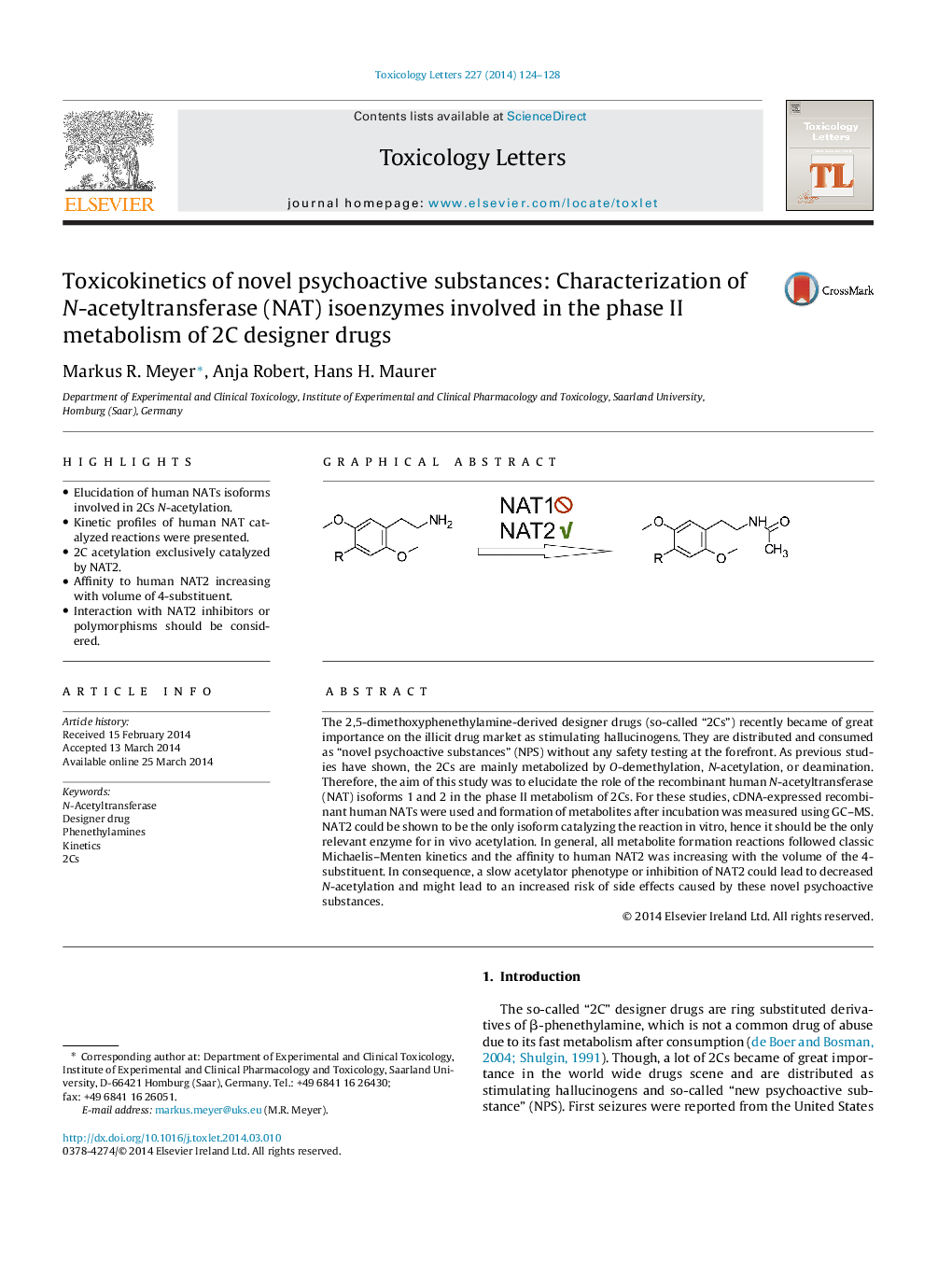| کد مقاله | کد نشریه | سال انتشار | مقاله انگلیسی | نسخه تمام متن |
|---|---|---|---|---|
| 2599076 | 1133177 | 2014 | 5 صفحه PDF | دانلود رایگان |

• Elucidation of human NATs isoforms involved in 2Cs N-acetylation.
• Kinetic profiles of human NAT catalyzed reactions were presented.
• 2C acetylation exclusively catalyzed by NAT2.
• Affinity to human NAT2 increasing with volume of 4-substituent.
• Interaction with NAT2 inhibitors or polymorphisms should be considered.
The 2,5-dimethoxyphenethylamine-derived designer drugs (so-called “2Cs”) recently became of great importance on the illicit drug market as stimulating hallucinogens. They are distributed and consumed as “novel psychoactive substances” (NPS) without any safety testing at the forefront. As previous studies have shown, the 2Cs are mainly metabolized by O-demethylation, N-acetylation, or deamination. Therefore, the aim of this study was to elucidate the role of the recombinant human N-acetyltransferase (NAT) isoforms 1 and 2 in the phase II metabolism of 2Cs. For these studies, cDNA-expressed recombinant human NATs were used and formation of metabolites after incubation was measured using GC–MS. NAT2 could be shown to be the only isoform catalyzing the reaction in vitro, hence it should be the only relevant enzyme for in vivo acetylation. In general, all metabolite formation reactions followed classic Michaelis–Menten kinetics and the affinity to human NAT2 was increasing with the volume of the 4-substituent. In consequence, a slow acetylator phenotype or inhibition of NAT2 could lead to decreased N-acetylation and might lead to an increased risk of side effects caused by these novel psychoactive substances.
Figure optionsDownload as PowerPoint slide
Journal: Toxicology Letters - Volume 227, Issue 2, 5 June 2014, Pages 124–128